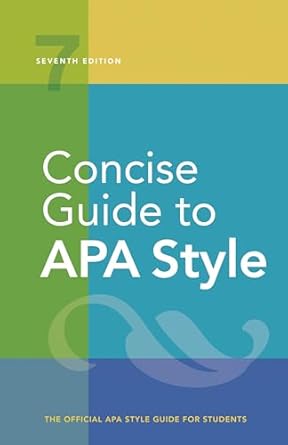[toc]
intext citations mastering academic writing
Concise Guide to APA Style: 7th Edition (OFFICIAL)
Page 207 Review
Understanding In-Text Citations: A Detailed Analysis
In academic writing, proper citation is crucial for acknowledging sources and avoiding plagiarism.
This ebook excerpt delves into the nuances of in-text citations, differentiating between narrative and parenthetical formats.
Let’s break down the key concepts:
Narrative Citations
“In narrative citations, this information is incorporated into the text as part of the sentence.” This means the author’s name is woven directly into the sentence structure, followed by the year of publication in parentheses.
For example:
“Koehler (2016) noted the dangers of falsely balanced news coverage.”
This approach makes the citation flow seamlessly within the text, emphasizing the author’s contribution to the ongoing discussion.
“In rare cases, the author and date might both appear in the narrative.
In this case, do not use parentheses.” For instance:
“In 2016, Koehler noted the dangers of falsely balanced news coverage.”
Parenthetical Citations
“Both the author and the date, separated by a comma, appear in parentheses for a parenthetical citation.
A parenthetical citation can appear within or at the end of a sentence.
When a parenthetical citation is at the end of a sentence, put the period or other end punctuation after the closing parenthesis.”
This format places the citation within parentheses, either mid-sentence or at the end.
An example is:
“Falsely balanced news coverage can distort the public’s perception of expert consensus on an issue (Koehler, 2016).”
The excerpt also highlights specific rules for adding detail. “If other text appears with the parenthetical citation, use commas around the year.” For example:
“(see Koehler, 2016, for more detail)”
And for combining text and citation in parentheses: “When text and a citation appear together in parentheses, use a semicolon to separate the citation from the text; do not use parentheses within parentheses.” This gives us:
“(e.g., falsely balanced news coverage; Koehler, 2016)”
Citing Multiple Works
The text addresses citing multiple sources within a single parenthetical citation. “When citing multiple works parenthetically, place the citations in alphabetical order, separating them with semicolons.
Listing both parenthetical in-text citations and reference list entries in alphabetical order helps readers locate and retrieve works because they are listed in the same order in both places.” So, it would look like this:
“(Adams et al., 2019; Shumway & Shulman, 2015; Westinghouse, 2017)”
The excerpt continues, “Arrange two or more works by the same authors by year of publication.
Place citations with no date first, followed by works with dates in chronological order; in-press citations appear last.”
Importance of Accurate Citations
The excerpt stresses the need for precision and consistency in citations.
It is important to follow all rules in your style guide (APA, MLA, Chicago, etc.) .
In-text citations connect claims to the original source, letting the reader see the relationship for themselves.
By using correct citations, writers give credit to the original creator and avoid plagiarism.
Buy full ebook for only $18: https://www.lulu.com/shop/american-psychological-association/concise-guide-to-apa-style-7th-edition-official/ebook/product-rmzpq54.html?page=1&pageSize=4
Intext Citations Mastering Academic Writing
Read more: Creating Effective Figures: A Guide for Academic Writing


Leave a Reply